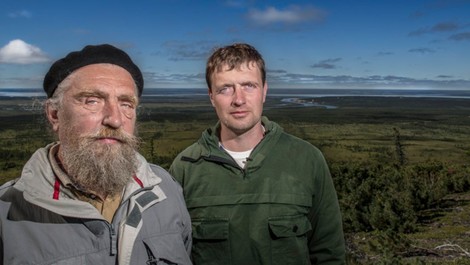Your podcast discovery platform
Curious minds select the most fascinating podcasts from around the world. Discover hand-piqd audio recommendations on your favorite topics.

piqer for: Climate and Environment Global finds Globalization and politics
I'm a freelance journalist, currently based in Madrid. I used to be a News Producer at CNBC in London before, but I thought a little bit more sun might do me good. Now I write for several news organizations, covering a range of topics, from Spanish politics and human rights for Deutsche Welle to climate change for La Marea.
Father And Son Are Trying To Bring Back The Mammoth... To Fight Climate Change
What? Yes, you read that headline right. And yes, I had a very similar feeling when I first stumbled upon this documentary from Aeon and The Atlantic. Like, ummm, ok. Mammoths. Right.
What an error I was making!
The documentary is not only greatly scripted and beautifully shot, it's also based on an idea that, if radical, deserves some consideration. Let me explain.
Permafrost is a thick layer of permanently frozen soil, found across the northern regions of Russia and Canada. If it warms too fast, we're in for a new level of climate hell: millions of tons of extra methane and CO2, trapped under ice for millennia, would be released into the atmosphere, accelerating global warming, and warming up more permafrost. Rinse and repeat.
One thing about the Arctic is that it lacks trees. That allows for snow and ice to pile, producing the albedo effect: the reflection of sunlight back to space, cooling the planet. There isn't anything quite as albedo-effective as snow and ice. If you've ever forgotten your sunglasses when skiing on a sunny day, you now how incredibly reflective snow is.
Russian biologist Sergey Zimov realized this 20 years ago, and envisioned a radical plan: eliminate the trees, making space for more snow. That would cool down the permafrost and buy us some time before we enter the deadly warming loop. He would create a wildlife park dominated by grasslands, the Ice Age's main ecosystem.
What's the best way to eliminate trees? Of course, you may think... bulldozers! But isn't that a bit polluting itself? It would defeat the purpose, and cost a pretty penny too.
So, what if there was an animal big enough to trample down the fragile larches of the taiga? An animal that could also walk around on snow, making it more compact and cold at every step?
You're right.
Genetically engineered mammoths.
If you'd rather read this story, you can do so at The Atlantic. But then you'd miss the immensely cool Sergey Zimov, so I recommend the video linked below. Enjoy!Stay up to date – with a newsletter from your channel on Climate and Environment.
